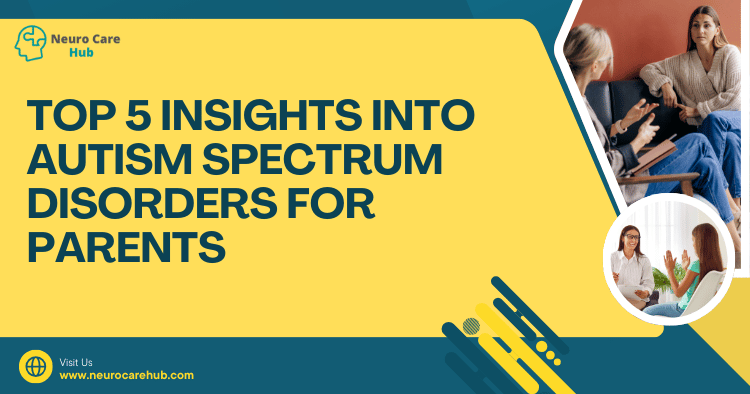Table of Contents
- Understanding Autism Spectrum Disorders
- Signs and Symptoms
- Diagnosis and Assessment
- Intervention and Support Options
- Promoting Inclusivity and Acceptance
Understanding Autism Spectrum Disorders
Autism Spectrum Disorder (ASD) encompasses a range of neurodevelopmental conditions that affect communication, behavior, and social interaction. Each individual with autism is unique, exhibiting a wide array of strengths and challenges. Understanding this spectrum is crucial for parents, as it provides a foundation for supporting their children effectively.
“Every child is unique, and understanding their individual needs is key to effective support.”
ASD is often characterized by difficulties in social communication and restricted or repetitive patterns of behavior. It’s important to note that there is no singular cause of autism; rather, it results from a combination of genetic and environmental factors. For more comprehensive information, check out resources from the Autism Society and the Centers for Disease Control and Prevention (CDC).
Signs and Symptoms
Identifying autism early can lead to better outcomes for children. Here are some common signs and symptoms to watch for:
| Age Range | Typical Signs |
|---|---|
| 0-6 Months | Limited eye contact, lack of response to name |
| 6-12 Months | Absence of babbling or gestures, not sharing enjoyment |
| 12-24 Months | No words by 16 months, limited pretend play, lack of interest in peer play |
| 2-3 Years | Difficulty with social interactions, repetitive behaviors, resistance to change |
“Every child develops at their own pace; recognizing patterns can help guide early intervention.”
It’s essential to remember that every child develops at their own pace. If you notice several of these signs consistently, consulting with a healthcare professional can provide guidance.
FAQs
- What is the difference between autism and Asperger’s syndrome?
- Asperger’s is often considered a form of autism with milder symptoms, particularly in language skills and cognitive abilities.
- Can autism be diagnosed at a young age?
- Yes, autism can be diagnosed as early as 18 months, although many children are diagnosed later.
Diagnosis and Assessment
Early diagnosis is key to effective intervention. The assessment process usually involves a comprehensive evaluation by a team of specialists, including pediatricians, psychologists, and speech therapists.
“Advocating for your child during the diagnosis process is an important step in their journey.”
Steps in Diagnosis:
- Developmental Screening: A brief assessment to identify potential delays.
- Comprehensive Diagnostic Evaluation: In-depth assessment, including interviews, questionnaires, and observations.
- Medical Evaluation: Rule out other conditions and assess overall health.
Parents should feel empowered to advocate for their child during this process. The American Academy of Pediatrics provides guidelines for screenings and referrals.
For further insights, parents might find the article on Top 5 Essential Insights on Neuro Care You Need to Know valuable.
Intervention and Support Options
Once a diagnosis is made, it’s time to explore intervention and support options. Early intervention can significantly impact a child’s development. Here are some common approaches:
Educational Support:
- Individualized Education Programs (IEPs): Customized plans designed to meet the specific educational needs of children with autism.
- Specialized Schools: Institutions that cater specifically to children with autism, providing tailored learning environments.
Therapeutic Approaches:
- Applied Behavior Analysis (ABA): A widely recognized method that uses reinforcement strategies to encourage positive behaviors.
- Speech and Language Therapy: Helps improve communication skills, which can be particularly beneficial for non-verbal children.
“The right support can make a world of difference in a child’s development.”
Family Support:
- Parent Training Programs: These programs empower parents with strategies to support their child at home.
- Support Groups: Connecting with other parents can provide emotional support and valuable resources.
For more information about intervention options, visit the National Autism Center for evidence-based practices. Also, consider reviewing strategies to enhance effectiveness in neuro care, such as the Top 5 Ways Caregivers Enhance Neuro Care Effectiveness.
Promoting Inclusivity and Acceptance
Creating an inclusive environment is crucial for individuals with autism. Here are some ways parents can promote acceptance:
- Educate Others: Share knowledge about autism with family, friends, and educators to foster understanding.
- Encourage Peer Interaction: Facilitate opportunities for your child to interact with peers, promoting social skills and friendships.
- Celebrate Differences: Emphasize the unique strengths of your child, fostering pride and self-esteem.
“Inclusivity starts with understanding and valuing differences.”
FAQs
- How can I help my child make friends?
- Encouraging play dates or joining clubs that align with your child’s interests can help cultivate friendships.
- What should I do if my child faces bullying?
- Open communication is essential. Address the issue with school authorities and reinforce your child’s self-worth at home.
Promoting a culture of acceptance not only benefits your child but also helps pave the way for a more inclusive society. For more strategies, check out Autism Speaks.
By understanding autism spectrum disorders, recognizing signs, navigating the diagnosis process, exploring intervention options, and promoting inclusivity, parents can play a pivotal role in their child’s development journey. Remember, you are not alone on this path—numerous resources and communities are here to support you every step of the way.






